
Table of Contents
EDITOR'S NOTE
Preparing for Tours Abroad
Khalid Mohidin
Founder and Editor - Cricket Fanatics Magazine
Cricket is a game with many variables. It isn’t as simple as picking an XI and just telling them to go out to the middle and play.
Weather conditions, field conditions and the quality of the pitch can affect an outcome of a match quite drastically.
In sport, we often hear about home advantage playing its role in a game, but in cricket the toughness of going abroad and getting a positive result is harder than other sports.
It's not just about surviving the hostility of the local fans in the stadium, there are natural variables unique to location that also have a massive say in the result of a game.
The Proteas have had many successful tours overseas and beating Australia and England has always been on the top of our list.
We have managed to cause quite a few upsets against those cricketing nations in their own backyard. A lot of effort has gone into SA finally becoming competitive against those two nations in particular.
Whereas a trip to India, has always been seen as a daunting task, particularly in Test cricket.
There have been many camps to try and combat India’s biggest weapon, which is very much unique to them – spinning conditions.
South Africa have lost more games away than home games in Test cricket – 59 won, 75 lost and 65 drawn – which is an indication of the difficulty preparing for overseas conditions.
In ODIs and T20Is we have managed to edge towards a positive Win/Loss ratio, but there is still a lot of effort put into the preparation process before a team plays an away series no matter the format.
For this Issue, we spoke to a number of players and coaches to find out more about how teams prepare for overseas conditions and tours.
This has given us a better understanding of what goes into preparing for tours abroad, and how players aim to emulate overseas conditions locally to give them an edge before leaving South Africa.
So sit back, grab a snack, a beverage and enjoy our 25th edition of our Monthly Magazine.
Do you want to help us promote South African cricket? Become a Patreon today!

How you can help promote SA Cricket
By Khalid Mohidin
Hey, guys! Welcome to Cricket Fanatics Magazine, the first and only fan-driven Cricket publication in South Africa.
This is a very special announcement that I believe will change the way cricket is supported in South Africa.
I started this venture on 1 July 2019 with a vision to get fans from all walks of life engaged with the game and give them access to the personalities in South African Cricket.
We want to tell the untold stories of South African cricket and we want fans to be heard.
Since we started, we covered the Mzansi Super League, Women’s Super League, Proteas Men and Women International Test, ODI and T20I series, as well as school and club cricket, with the aim of providing entertaining, engaging and educational content.
But haven't stopped there.
We started a Monthly Magazine where we provide multi-media content, including exclusive features, opinion pieces and analysis.
This works hand-in-hand with our YouTube channel where we produce unique cricket shows that allow fans to call in and have their say.
We have the Daily Show, which reveals all the major talking points in South African cricket, the Sunday Podcast Show where we sit back, relax and engage with the live chat, answering all the questions fans have about us and the game.
We have Off-Side Maidens, the first ever All-Women’s Cricket Show on YouTube, which helps empower women in cricket and gives them a place to share their own views on not only women’s cricket but all cricket.
We have a Legends show, where we interview all legends in cricket.
To produce all of this, we’ve invested a lot of money, time and effort to bring this to you for free.
But to keep this going we need your help.
So we have opened a Patreon account.
In the past, the super-rich supported the work of artists as patrons of the art.
Today, we are fortunate that technology has enabled anyone to become a patron of creative work, even if they are not billionaires.
We have therefore launched a campaign for you as a Cricket Fan to become a patron and support us as an independent, bootstrapped publisher.
As a Patron, you also get your voice heard as a Fan.
Plus: You have the opportunity to become more engaged with the content we produce.
Every month we produce at least:
- 60 Website Articles
- 20 Daily Video Shows
- 4 Weekly Podcasts
- Match Previews
- Match Reviews
- Video Interviews
- And more…
So please join our Patreon today initiative today. Even a tiny amount can make a big difference.
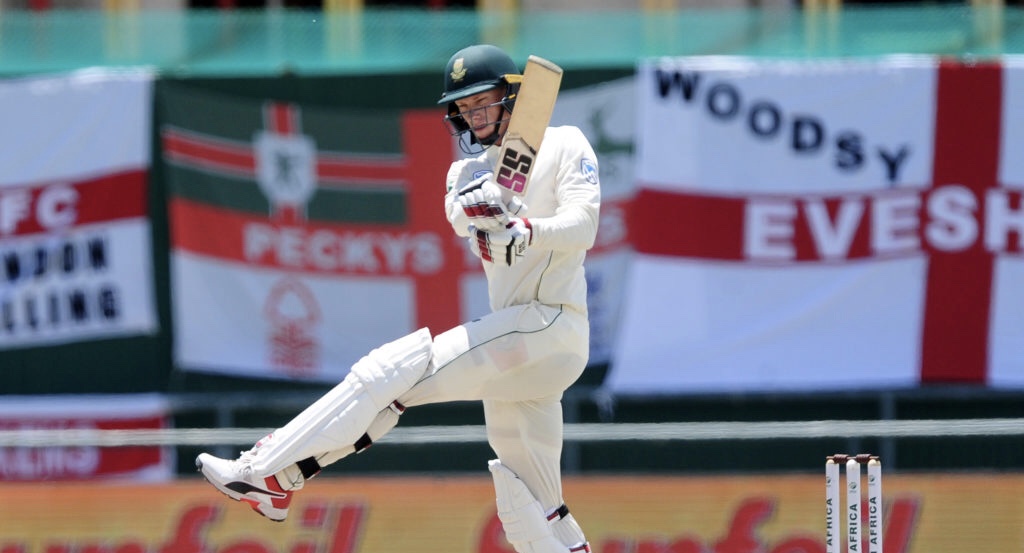
How Does Rassie van der Dussen Prepare for Overseas Tours?
By Marc Jacobson
Proteas star Rassie van der Dussen has revealed that harnessing and fine-tuning a sense of mental fortitude is paramount in preparing for the busier and more congested schedules that modern professional cricketers face.
These challenges are exacerbated when players are required to do duty overseas on long tours, which, in cricket, are traditionally longer than in any other sport due to the different formats they are required to play in.
Another Proteas stalwart, Quinton de Kock, recently expressed discernment of the clogged schedules that are brought upon international players, due to them needing to commit continuously to the three different formats almost simultaneously.
It is for this reason that De Kock had recently called time on his Test career – so that he can focus on T20Is and ODIs instead.
Van der Dussen, a ‘late-bloomer’ in the South African set-up, having only made his T20I debut at the age of 29 in 2018, before debuting in ODIs and Tests the following year at 30, has become an asset for the Proteas in all formats to date.
Usually batting at no.3 or no.4, the 33-year-old has especially flourished in ODI cricket, averaging 69.30 in 32 innings and currently occupying 3rd on the ICC ODI batting rankings. He’s ranked 10th on the current T20I standings and 46th on the Test ratings.
These differences in rankings could, to a degree, mark the differences in the challenges that each format may impose, and for Van der Dussen, being able to manage these obstacles and strike a balance in lifestyle routines is important for aiding longevity of a player’s career.
“These days with the schedule and the way things are, we’re not at home a whole lot,” Van der Dussen admitted, speaking exclusively to Cricket Fanatics Magazine, “so the time I do spend at home I sort of try to switch off and stay away from cricket and try to refresh mentally.
“[I try to] spend some time with the family, have a few braais – just get away from the game – because when you’re on tour and in it, it comes thick and fast.”
The Pretoria local said what eases the blow of demanding tours is being allowed to be able to regroup mentally and sharpen up in different areas for several days before the opening series begins.
“Having the luxury of 10 days before our first official match here in England gives you enough time to touch up on your conditioning firstly and to also get you used to the conditions.
“But sometimes you don’t have that luxury – you have just a few days in a country – and then you need to start thinking about and preparing for the opposition you’re going to face.
“For this one, we had time to sift through their bowlers, get used to the conditions and weather and get time on the legs in the two warm-up games, which is also vital. That’s generally how I try to approach it.”
The varying conditions that are pressed by different countries when touring is certainly another notable test for players and coaching staff alike, which emphasizes Van der Dussen’s point of needing time to prepare sufficiently.
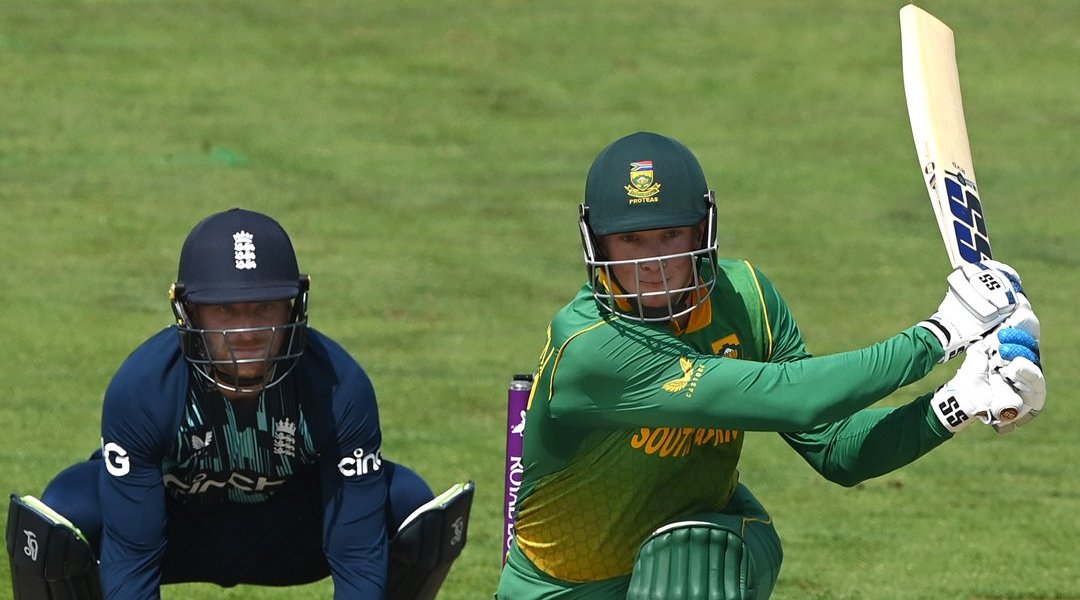
Attempting to imitate the different conditions beforehand then becomes a task worth exploring.
“There are ways to try to emulate conditions. In our build-up to these three ODIs (against England), for example, we spent a lot of time on the bowling machine, from a left-arm seam point-of-view, getting the ball to swing, [while] playing late and playing straight,” Van der Dussen meticulously explained.
“That’s the benefits these days of knowing the players and squads we’ll come up against. You try to emulate it as much as possible but obviously, the facilities determine what you can and can’t do.
“In England, they’ve been good with regards to the facilities so you can have a plan and structure to your training and tick all the boxes of what you’re going to come up against.”
He added, respectfully, that this is not always the case when touring the sub-continent and the “smaller nations” wherein they are “more challenged in terms of facilities”.
“Then it becomes more of a mental preparation and you have to sort of mentally grasp what you’re going to come up against – and you just have to prepare that way.”
While the national set-up does its part in assisting the players through adversity and support, Van der Dussen, who plays for the Lions, said it helps when a level of sustenance is also offered by the clubs and franchises to aid national players in their navigation of challenging campaigns.
“Where I’m at with the Lions, they’ve always been very forthcoming in terms of the facilities,” Van der Dussen, who made his first-class and List A debuts for Northerns back in 2008, said.
“If you need the nets to prepare or the gym or the field to do your thing, they’ve been very helpful and quite understanding.
“Everyone’s in it for the greater cause. I’ve also had some preparation at SuperSport Park which is the Titans’ ground, yet I play for the Lions, but people see it for the greater good – you’re preparing for a Proteas tour.
“In general, before a tour, there are so many hands that want to help and be a part of it. That’s a great thing for a player within the cricket community.”

Everything Is Planned – Richard Pybus
By Aditya Mehta
“All of us can agree there’s no better feeling than bumping the Aussies.”
- Faf du Plessis after South Africa won the three-Test series in Australia by a margin of 2-1.
One of the most fascinating aspects of international cricket is the prevalence of home and away fixtures in all three formats of the game.
While teams have a distinct advantage when they play on home turf, it is a colossal undertaking to win a series in overseas conditions.
Therefore, this issue delves deeper into important considerations for teams to win overseas.
Renowned international cricket coach, Richard Pybus, spoke to Cricket Fanatics Magazine to reflect on what teams need to do to succeed overseas.
Pybus assigns significant value to data analysis.
“The lovely thing about coaching in today’s age is that we get really good data. We need to break down the data of what we need to be producing in terms of performance across the different subunits of the team to be able to put us in a situation where we can go there and win a series.”
According to Pybus, the data determines the types of players needed to win in those conditions.
“If you’re playing in England in spring, it’s very different to playing in Chennai in 40 degrees heat on turning wickets. The units of your team are really, really important.”
In an ideal scenario, Pybus would want the sort of depth in a squad that would allow the team to be competitive in all conditions.
“All of your planning is long-term. You don’t ever want to be reactive when series are coming up.”
Interestingly, Pybus pointed out that the batting unit of a squad typically remains the same, irrespective of conditions; it is the bowling unit that changes depending on the demands of the conditions on offer.
“Your batting unit is pretty much always going to be your batting unit, that’s not really going to change. Your bowling unit will change, obviously. India to New Zealand are very different bowling units, relative to what you’re going to need from seam to spin.”
Further, it is critical for team managements to carry out in-depth analyses of the opponents teams will come up against.
Pybus explained, “Where are the weak links in the opposition? What are the core strengths of your opposition? I'm planning for that. And now you got to be able to control the game first.
"That’s the first thing you're planning for - it's being able to control it, hold it, build up pressure; all the key opportunities during the game from the new ball and the breaks in play.
"So nowadays, there's a lot of talking about matchups - that's really just domain for what we would have been doing forever. But what are the best combinations against the different subsections of the team that you're playing against?”

With advances in sports science and medicine, Pybus revealed that team managements have started accounting for externalities such as travel and climate conditions.
“When players from the subcontinent would come somewhere like England in the spring or early summer, that’s quite a challenge. I remember with Pakistan players is that you could be playing in less than 20 degrees Celsius and you’ve got cold fingers, cold hands, and cold feet.
"It takes some time to get into it. So just managing that awareness, making sure you’ve got the right kit. That might sound like it’s obvious, but I can definitely say with cricket boards in the past that quite often you think you’d be on tour but have the wrong kit for those conditions. Making sure that if you’re in spring in England, you’ve got enough sweaters and thermals.”
When Pybus was Director of Cricket in the West Indies setup, he recalled the emphasis on playing numerous warm-up games to ensure that players had sufficient time to acclimate to weather and ground conditions.
“When I was chatting with our selection panel in the West Indies, one of the key things was having enough games for players to get into playing in conditions overseas. We made it policy so that when we arrived, we built it into the series. Players would have the best opportunity to be acclimated and be ready to play the first Test.”
However, the busy international cricket calendar over the last 15 years has limited the possibility of multiple warm-up games, which in turn, has had bearing on series results when teams travel overseas.
“A lot of touring sides lose the first Test and you know you’re behind the game straightaway. So ideally, you want to dominate that first Test and set the tempo for the series.”
Dominating the beginning of a Test series, according to Pybus, also depends on the cricket board’s priorities and planning in the lead up to a marquee series.
“It’s all about the quality of the planning and board priority. What will typically happen is that the team goes for a big series overseas. Yet, the planning has been very poor. Whichever administrators were involved, they didn’t look at the sequence of events going up to a big series in aspects such as rest and recovery.”

Offering Australia’s example, Pybus provided rich insight into their tactics to ensure the team had the best chance of winning the series.
“One of the things that Australia have done so well historically in the past is that for an incoming series, they take you to Perth, which is on the other side of the continent, to play the odd tour game against the Western Australian Prime Minister’s XI and then you might have a game against Western Australia.
"Then, they fly you across the continent. Bearing in mind, you’ve already traveled across time zones, then you’d have to travel from Perth to Queensland, which is a couple of time zones, and then you’d have a hit out in Queensland, and you’ve been to the first Test.
"There’s absolutely no accident that the Gabba would have been a fortress for them, which would set up every single series they play. They want everything loaded in their favour, and of course, that is 100 percent right.
"So touring sides would have no real wriggle room because that is the historical structure of the fixture. But when you look at the record of the Gabba, you understand exactly why and of course, when you go one-nil down in Australia, it’s really tough to come back.”
It is often said that for teams to win Test matches, particularly overseas, they need to be able to pick twenty wickets. To do that, selectors need to be on the lookout for bowlers who can help the team get twenty wickets.
At present, teams across the world are challenged by the scarcity of fast bowlers who can clock speeds of 150 and above.
Asked about how teams can find and nurture express pace bowlers, Pybus gave relayed an anecdote from his time as a consultant for one of the franchises in the South African domestic setup.
“A franchise asked me to go and do some work with them. I went out and I was looking at some talent across the country. I went to the premier age-group tournament in South Africa. I was watching one-day cricket because the cricket was all one-day cricket or T20 cricket at that stage.
"There was no longer four-day matches or you might play a two-day game at U19 level within a week. The bowling was literally all sort of medium-fast or at best, fast-medium, but mainly medium-fast with ring fields. It was unbelievably boring.
"You can see that the cricket culture, unfortunately, in schools cricket had moved towards a more defensive mindset. A more let’s run up and bowl length, let’s ask the opposition to hit the ball over the ring. So, there was definitely not an offensive mindset.
"The thing about bowling quick is that fast bowling has got to be encouraged for quicks. The teachers at school have got to encourage the governing bodies to encourage that (fast bowling).
"South Africa would be one of the great homes of fast bowling and when you see there is a culture change, you’ve got to go back out and reinvigorate the fast bowling culture.”
Pybus explained that scouts needed to travel across the country to set up programs that would identify fast bowlers.

South African great, Makhaya Ntini, was discovered by Greg Hayes around the time Pybus was coaching the Border cricket team. Ntini hailed from a rural part of the Eastern Cape and was found by Hayes, who had a long history of nurturing players from rural South Africa.
Ntini had serious competition at the time, for there were a number of bowlers gifted with the ability to bowl at express pace, but it was Ntini’s “character, temperature, and desire” which led him to represent the national team.
Further Pybus discussed, “When I was up at the Titans, we had a young lad that people might have heard of – Dale Steyn. Dale came from Phalaborwa, which is on the south coast border with Zimbabwe, and that’s a good five hours outside of Pretoria. It’s a little mining town.
"So Dale is not coming from an orthodox pathway, where he’s been at some nice, big established school. He has been playing cricket out in the mining town. I remember saying to Dale when he was playing for his province, which would be one of the smaller provinces, 'Dale, did anybody from Cricket South Africa come up and speak to you? Does anybody scout here? He said ‘nobody.’ Can you imagine?"
Elaborating on Steyn’s story, Pybus continued, “Before Dale, the fastest strike-rate in the history of cricket was Waqar. Then Dale came, and he and Waqar are very similar type of bowlers. When you look at his strike-rate and volume of wickets, the greatest bowler of all time is Dale Steyn.
"So you got a kid who has not been scouted at any level up to the age of 19. The provincial setup would have seen him, but the national body hasn’t seen him, and nobody had a conversation with him.
"We had the joy of watching the Dale Steyn era because he decided that he wanted to come for a trial at the Titans Cricket Academy, and he managed to get a lift down in time. Somebody gave him a lift for five hours in the car to come down and bowl. I spoke to the assistant coach and captain at the time, and I said, 'What happened that day?' They said they saw the skinny little kid run up and the two of them just looked at each other.
"At the time, the captain was a guy called Gerald Dros and the assistant coach was a former fast bowler called Chris van Noordwyk. The two of them knew what they were looking at, but nobody from the national body had identified him.
"If Dale had not decided to get a lift down to come that cricket academy, we may never have heard of him, and that really is not a compliment to the national body when you’re not scouting that type of talent.”

From a batting perspective, Pybus used former South African captain, Faf du Plessis’ example to illustrate how his long journey at the domestic level and in the county circuit in England equipped him with the technical foundation and mental strength to succeed at international cricket.
By the time Du Plessis made his ODI and Test debuts, it was evident that he had the tools required to become a mainstay in South Africa’s red-ball and white-ball teams.
“When I worked with the Titans. Faf would have been 20. He was unbelievably passionate and determined really. I think a great motivation is that his great childhood friend, AB (de Villiers), just snuck a little bit of a lead on when he got pulled up into the South African set up.
"Faf had a longer journey. And I think Faf became very determined. Also, we had a really serious batting lineup at the Titans. Faf wasn’t playing in the first team when I arrived. He really had to go and do his hard yards to go and play plenty of second team cricket, get the hundreds, and earn the opportunity to play first-class franchise cricket.
"Slowly but surely, he started to put his game together. He just worked incredibly hard. Other than his own desire to be able to achieve because he was very clear where he wanted to get to. He wasn’t remotely close to South Africa, but he was going to play for South Africa and he had already decided in his mind that he was going to captain South Africa.
"When AB went flying off and he’s playing for South Africa, Faf would probably have had to play about another five years of cricket before he caught up and got into the national team with AB.
"That’s why I think when Faf came into the international setup, he really understood his game. First-class to international cricket is a transition, but it’s less of a transition when you’ve got a really good, solid technical setup.”
Richard Pybus’ extensive experience as a cricket coach across the world points to planning, data analysis, and effective scouting as being essential to teams winning overseas on a consistent basis.
The current trend in international cricket is that teams are dominating at home but losing overseas. For teams to reverse this trend, they would probably need to implement some of the insight Pybus has imparted through this article.
New! Business Corner
Cricket Fanatics Magazine has the visibility, infrastructure, expertise and toolset to promote your brand, business, product or service.
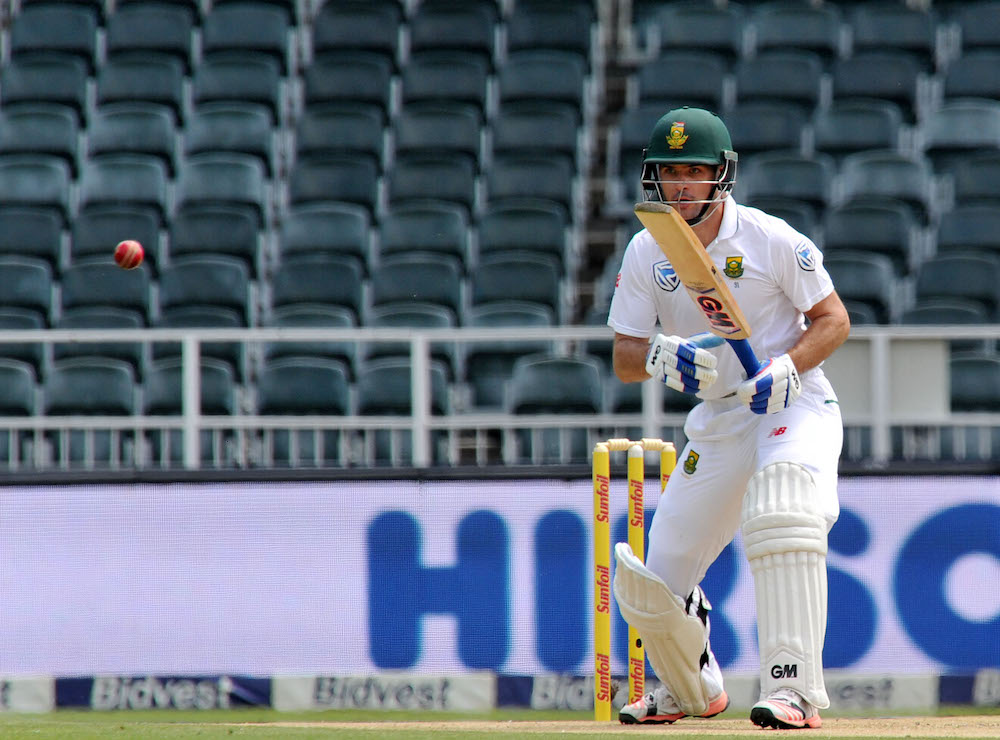
Going against the tide - 'Gamebreakers'
By Ravi Reddy
My passion for cricket has resulted in many calamities.
At one point I missed a bus in Austria headed to Germany in the euro winter of 2008.
The reason?
JP Duminy was about to score his first Test century on an away tour in Australia.
Mark Boucher, who was an active player at the time, just got out and the score was 141/6. I happened to be on a Contiki tour of Europe (with many Australians!). The feeling on the tour bus was that Australia was going to trump South Africa at the Melbourne Test.
With only 4 wickets left, all hopes were rested on a young (and highly in-experienced) JP Duminy. This would begin a dominant era in South African cricket, where winning away from home became a habit.
Graeme Smith captained the Proteas between 2003 to 2014 and earned a compelling win ratio of 48% (Won = 53, Lost = 29, Drew = 27).
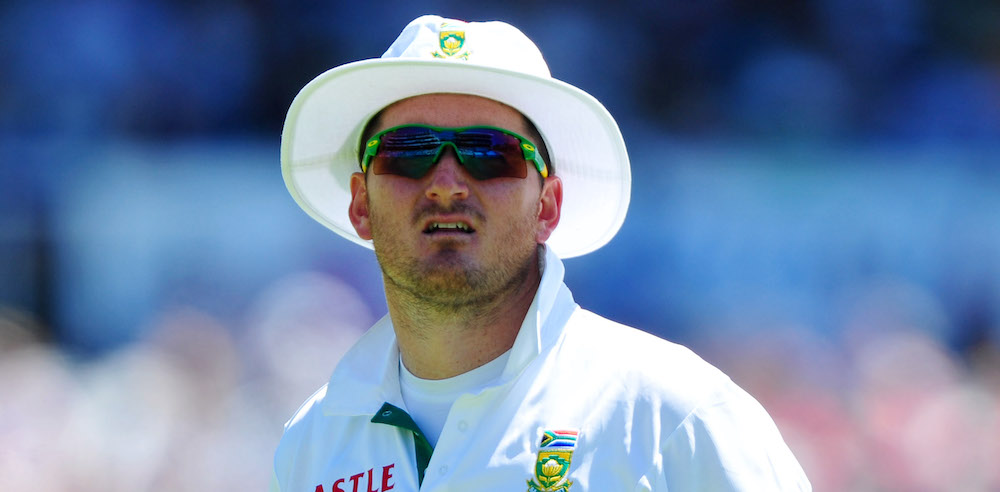
Smith’s tenure as captain resulted in Test series wins in Australia (2 of them), England, West Indies, Bangladesh and New Zealand between the periods 2003-2014.
It was challenging times in the South African camp as major stalwarts such Klusener, Pollock, and Ntini all retired or departed the side before the 2008/2009 Test season.
While challenging, this opened the opportunity for many talented players in the form of Philander, Steyn, Morkel, De Villiers, Duminy and many more to enter the fray.
The injection of young and impactful talent had an impact on South Africa’s winning ratio away from home.
To better understand the dynamic of performing away from home, I consulted the opinions of two former proteas players.
I caught up with Fanie de Villiers, former Proteas bowler with multiple accolades in his 83 ODIs and 18 Tests.
“In most technical games, especially at the highest level, more so away from home you need to be able to tick most (if not all) of the boxes in your area of expertise.”
De Villiers explained that this was applicable to the athletes that play a big role in especially extraordinary circumstances. A perfect example was during the Proteas tour of Australia in 93/94. It was here that de Villiers truly made his mark.
During the new years Test in Sydney, “Vinnige Fanie” was responsible for restricting the Australian hosts to a meagre 111 in 56.3 overs while defending 116 (scorecard available here).
“The wicket started to deteriorate and became very slow, holding up a bit and gripped on the softish surface. Warney took 10 or 11 wickets in this match. My go to delivery was the “off cutter” in which I perfected in England during the county season of that year.
"The swing bowling approach didn’t work on the Sydney surface as the “off cutter” gave me options of catchers at short leg and ideal for bowling at left handers.”
De Villiers also commented on the concept of the “game breaker”, the individual responsible for changing the game or making a significant breakthrough.
“Some players evolve more than others in abilities and experience, by ticking certain technical boxes. These are generally the senior players in the team, which call on their experiences to serve as a gamebreaker in a difficult match up.”
I also had an opportunity to connect with Stephen Cook, former opener for the Proteas.
In 2016, Cook famously made his Proteas debut at the age of 34 against our age-old rivals, England. Cook scored a resounding 115 against England becoming the 4th-oldest centurion at the time.
“Teams are no longer playing warm-up tours as they did in the past. This used to help touring sides acclimatise to the conditions of the environment.”
Tours are certainly more streamlined and minimized to accommodate more varieties of the game during a given tour.
“What has made us (the Proteas) successful comes down to leadership, we had great leaders on and off the field.
"We also had a wealth of senior players or rather a senior player group. We had support staff, namely Dr Moosajee, keeping our players together both as a medical professional and team manager.”
Cook also commented on family members joining the overseas cricket tour," The importance and privilege of having our family join us on tour is significant.”
Previous interviews have shown that the presence of family alone had a positive impact on their mental wellness and esteem in general.
“There are some positives playing overseas. Playing away from home is sometimes advantageous as there are fewer distractions, and the team is more together and unified. This results in a harmonious team environment.”
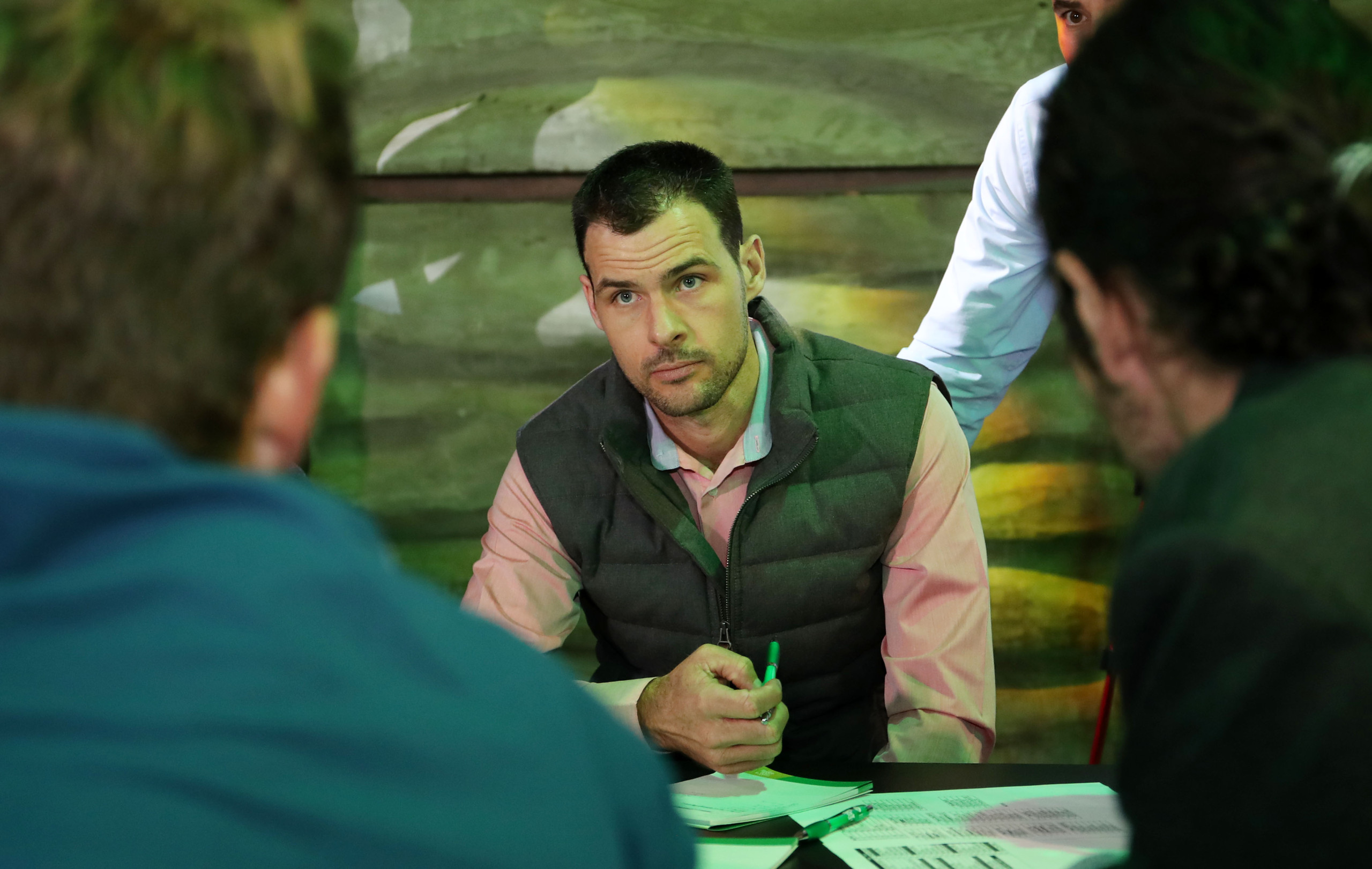
Cook indicated that the depth of the Proteas was also advantageous.
“We had a senior players group that made this the golden era of South African cricket. These players would include Kallis, Prince, Amla and Smith that came in with a wealth of experience playing away from home.
"Apart from a versatile player unit, we have a variety of playing conditions in South Africa that can prepare us well for eventual tours overseas.
"This would include a fast and bouncy track at the Wanderers and contrastingly a slow and turning wicket in the Eastern Cape.
"Honestly, who would have thought we would have beaten Bangladesh with a set of our spin twins.”
It is quite evident that the Proteas have conceived a methodology of winning and performing away from home.
After our discussion, Cook remained hopeful that the Proteas would perform well enough in England to secure another series win.
Advertisement
Ezra Poole's Online Wicketkeeping Academy
Learn how to Master The Craft of Wicketkeeping Without Having to Hire a Full-Time Personal Coach.
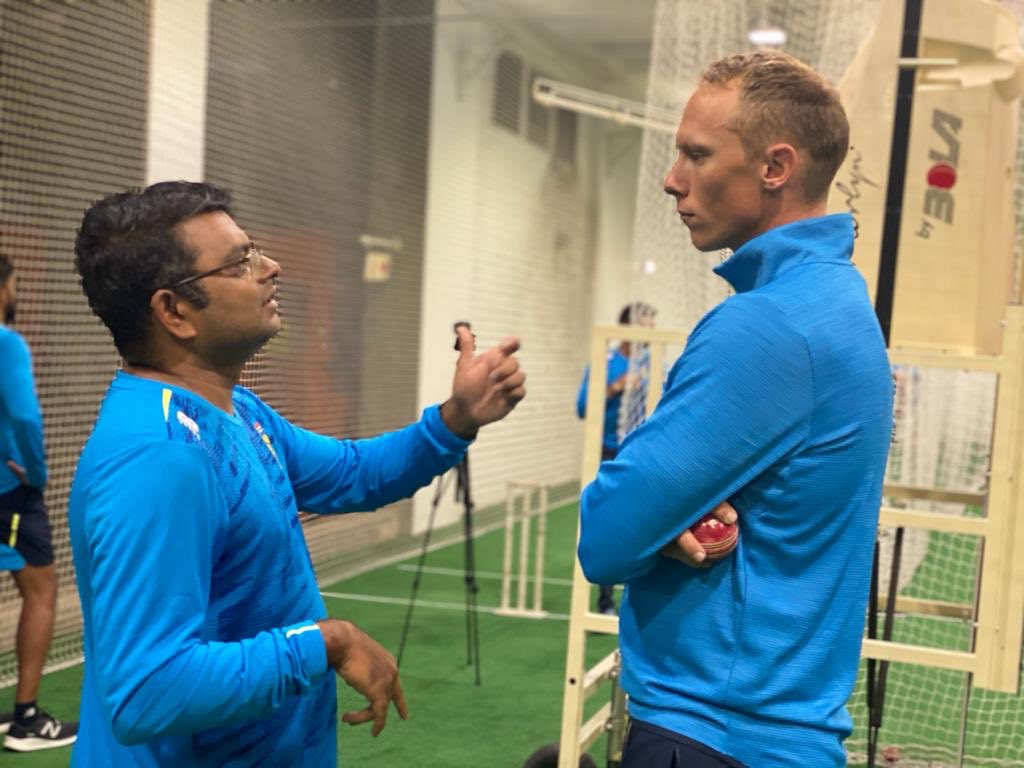
Behind the Laptop of Performance analyst Prasanna Agoram
By Ongama Gcwabe
What made the South Africa Test team successful away from home?
Former Proteas Performance Analyst, Prasanna Agoram, takes us through some of the processes they followed in preparing for a Test series away from home during his 10-year tenure as the Performance Analyst of the Proteas.
The Proteas Test team under Graeme Smith had an impeccable record in Test matches. They kept producing match-winning performances regardless of where they were playing or who they were playing against. Perhaps, the most successful year for the Proteas was 2012 when South Africa became the number one Test team in the world.
In 2012, South Africa played Tests at home, in New Zealand, England and Australia. They went past these big teams without losing a single game. Of the 10 matches they played, they won five matches and drew the other five.
Agoram joined the South Africa camp in 2010 on a tour to Pakistan. He was an integral part of the team’s success during the 10 years he was with the team.
He takes us through the processes he followed in getting the team ready for the task at hand, starting with the South Africa tour of Australia in 2016.
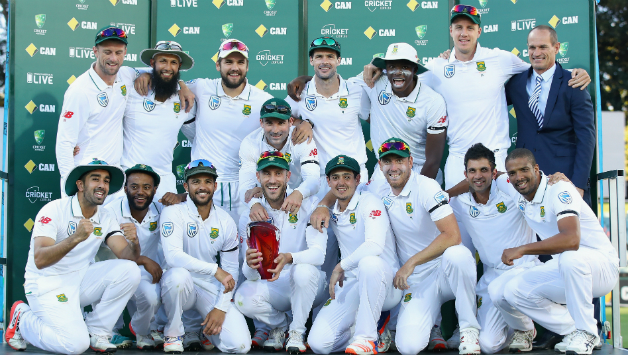
2016 Tour of Australia:
Keeping the Belief in the camp
“As a batting unit, Australia try to bulldoze you early on. That’s what they normally do. They try to score runs quickly in the first 20 overs and put you in defensive mode straight away.
"When we went there in 2016 Kagiso Rabada was a kid and he didn’t have a lot of Test matches under his belt. The worst thing that could have happened took place on the first day of the first Test when we were bowled out for 242 and Australia were on 105 for no loss at the close of play.
"When we came back on day two, Warner was removed by Dale Steyn and he immediately dislocated his shoulder which put him out of the series. Can you imagine the situation we found ourselves in?
"We had Vernon Philander, Kagiso Rabada and Keshav Maharaj who was making his debut. The other options we had were JP Duminy and Temba Bavuma. This is against Australia in their backyard. Everything looked to be going south for us.
"At the end of day one, we made it very clear that we fell into their laps in terms of their strategy. Those 105 runs came in just 22 overs on the first day.
“But we chose to focus on working with what we had and kept the belief in the camp that we could make a comeback. So we took the punch in the face on that first day and the first session on day two when we lost Dale but we didn’t lose the belief as a squad on tour, which is a very important part of winning away from home.
"We came up with the strategy that we were going to make them work hard for every run they make. We went for ensuring that we kept them quiet and waited for them to panic and make them take risks.
"Next thing you know Temba Bavuma runs out David Warner in that first Test and that lifted everyone’s spirits. We ended up winning that Test and that was largely because of the belief we kept as a side.
“In the second Test, we brought in Kyle Abbott. There was a bit of confusion on whether we were going to bat or bowl first, especially after we batted first in the first Test and won by a huge margin.
"I told Faf that it’s going to be a fifty-fifty record. When you bat first you had fifty per cent chances and vice versa. The most important thing if you bowl first, the first three hours are going to be conducive for seamers. We also identified that Nathan Lyon didn’t have an impressive record in Hobart.
"The Hobart pitch gets better and better. So it was going to be a gamble with what we were going to do having won the toss. I said it’s worth taking the gamble and the next thing you know we bowled them out in 2-and-a-half-hours and ended up winning the Test by an innings.
“Another thing I want to tell you about that first Test is that when we lost Dale, we knew Vernon Philander wouldn’t give us 7-over spells so we backed Kagiso Rabada and he responded beautifully. He told Faf that he was not going to take the ball out of his hand.
"The young Rabada took it upon himself to get the job done. And also Keshav Maharaj responded exceptionally well by showing character and maturity on his debut. Maharaj held up one end and we were able to rotate Rabada and Philander on the other end.
"You have to take into consideration that we had lost most of our senior guys when we went to Australia. We didn’t have Jacques Kallis, AB de Villiers and Graeme Smith. We were in a sort of a transition phase and still managed to secure a series victory with one match remaining."
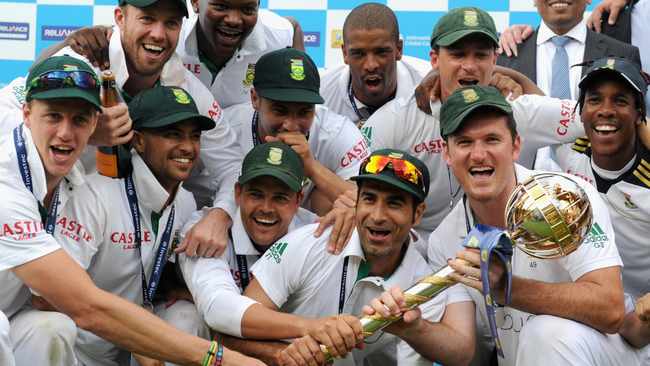
UK Tour 2012:
The power of a ‘laptop’ in the dressing room
“This was the time when England was dominating world cricket in Test matches with the likes of Strauss, Kevin Pietersen, Ian Bell and James Anderson to name a few. That was a team you would feel threatened by just looking at the names. When we went there we needed to win the series to become number one in the world for the first time in Tests. This was when Gary Kirsten was the coach and I was two years into my tenure with the Proteas.
“The first thing you’ve got to understand is the conditions. How do you play in Manchester, Lord’s and at The Oval in London? How does the pitch behave? Which is the session in which the fast bowlers are most successful? Which sessions do the spinners come into the picture? In which session do the most wickets fall and how do those wickets fall? How to pace your innings against that England bowling attack? All these things come into the picture.
“The threat in England’s bowling attack that everyone was talking about came from Anderson, Broad and the other seamers. But when I did my research I found that Graeme Swann was the one hurting touring teams the most and a lot of people didn’t know that.
"So, when I told this to Gary Kirsten, he asked me to formulate a plan to nullify the effort of Graeme Swann. I made my research based on a few great players, players who were successful against Swann.
"How do these guys play without taking too many risks? That was the main question. When I eventually had the answers to this question, I brought them up to the team in our strategy meetings before the tour happened.
"I put the video footage in ultra-slow motion to make it easy for everyone in the team to understand how they needed to play to be successful against the England bowling attack of that time. It's very easy to say - 'we need to score 400 runs.' But it’s not that easy to put those runs on the board.
"When Graeme Swann comes into the attack, what would our approach be? Were we going to attack him from the get-go or were we going to grind him to submission? These are the questions we needed to answer before an away Test series for us to be successful. So, my job was to bring the 'how' using stats and video footage of each opposition player. This is the type of research I would do when we're going away for a Test series.”
South Africa ended up winning that 3-match Test series 2-1 with victories at The Oval and the Home of Cricket, Lord’s. The only drawn Test on that tour was in Leeds where Kevin Pietersen’s 149 prevented South Africa from wrapping the series up with one match remaining.
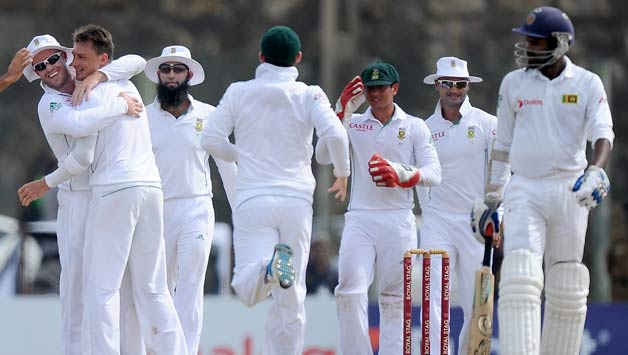
2014 Tour of Sri Lanka:
Learning from past mistakes
Perhaps the biggest challenge for the Proteas was winning Test matches in Sri Lanka. The team had never won a Test series in Sri Lanka before the 2014 tour.
Their previous tour saw them embarrassed by a 624-run partnership between Kumar Sangakkara (287 off 457 balls) and Mahela Jayawardene (374 off 572 balls) in Colombo in 2006.
Dale Steyn, who was part of the bowling attack that conceded all those runs against the Sri Lankans in 06 was the only bowler from 06 to tour Sri Lanka in 2014.
Steyn returned to Sri Lanka a different bowler with an acute understanding of his own game and the confidence to match his number one ranking in the world at the time.
In the first Test in Galle, Dale Steyn was Man of the Match with figures of 9-99 in conditions famously known for being a graveyard for fast bowlers. The Proteas went on to draw the second and last Test in Colombo and secured their first Test series victory in Sri Lanka.
"The next challenge we faced was in Sri Lanka in 2014 where South Africa had never won anything in Sri Lanka. We beat them in ODIs, we beat them in Tests, we even beat them in Galle and not many teams have beaten Sri Lanka in Galle at that time. Now other teams started beating the Sri Lanka team which had Sangakkara, Jayawardene, Upul Tharanga, Dilshan, Rangana Herath and Ajantha Mendis,” Agoram narrated.
“We went there and beat them in Galle and drew the Test in Colombo to secure the first Test series victory in Sri Lanka and we reclaimed the number one ranking. These are all the dynamics which I came through with for the Proteas and these were crucial to us becoming the tough tourists we were known to be in world cricket.
“I have been a part of the team that has won a Test series in England, in Australia, in New Zealand, against Pakistan in the UAE and against Sri Lanka in Sri Lanka."
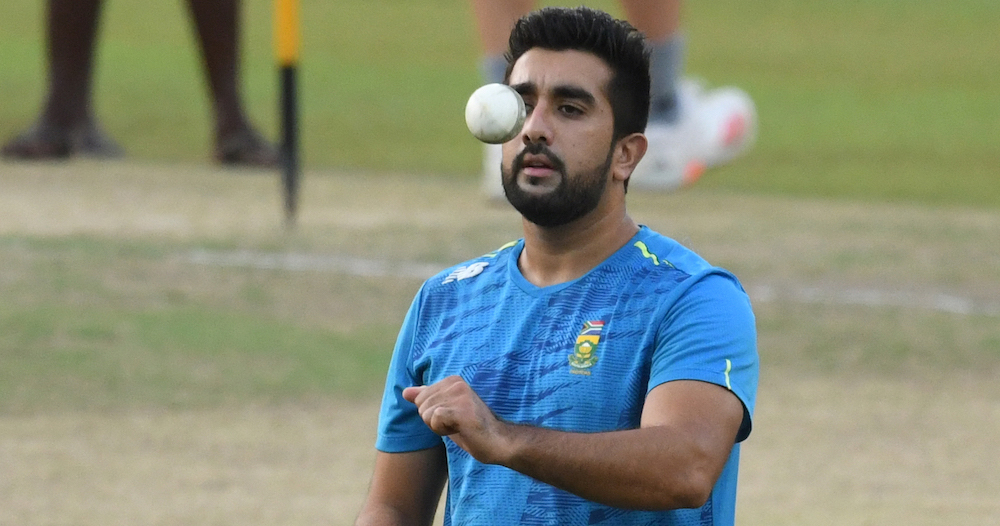
Sleight of hand
By C.S Chiwanza
Tabraiz Shamsi is unique and true to himself as a bowler.
“Imran Tahir was a great mentor to me. He taught me a lot of things. One of the best pieces of advice he gave me was that the ‘higher up you go, the better batters are going to hit you all over the park.’ It helped me to be fearless,” says Tabraiz Shamsi.
Tabraiz Shamsi was around six years old when he saw a magician perform for the first time. The Shamsi family had made the trip to the Nasrec Expo Centre for the Rand Easter Show.
The man, the magician, performed a trick that left everyone, adults included, speechless. For young Tabraiz, only one word came to mind, 'Wow!' Shamsi doesn't remember what the trick was, it was too long ago. What he does remember is that he fell in love with magic that afternoon.
“It wasn’t a phase,” says Shamsi. “From that day until I turned 16, I wanted to be a professional magician, then cricket took over.”
20 years later, Shamsi was leaving people speechless in the Caribbean with his magic. In 2016, during one of his Caribbean Premier League stints, Shamsi bamboozled Mike Haysman with a wonderful magic trick. It’s Shamsi’s favourite magic trick. Two years later, Shamsi left Dan Nicholl in a state of disbelief after he performed the same trick on Nicholls's show.
Shamsi's magic is sleight of hand. There are no grand movements meant to take attention away from his person. His magic is how his bowling is, sleight of hand.
Jarrod Kimber once remarked that Shamsi looks docile when bowling. Shamsi does not possess the presence of a predatory alpha-male spinner, like Rashid Khan or Wanindu Hasaranga, for example. Ball after ball, he gently loads up his left-arm wrist spin in a friendly way.
But, he takes wickets and maintains a low economy in the process. Shamsi’s bowling is like sleight of hand magic tricks, it’s beguiling.
In 2020, Shamsi dismissed Joe Root and Eoin Morgan with the third and fifth balls of his first over. As the two men sat in the pavilion, they discussed their dismissals as Michael Cabonaro's victims would. They had no idea what happened, it was sorcery.
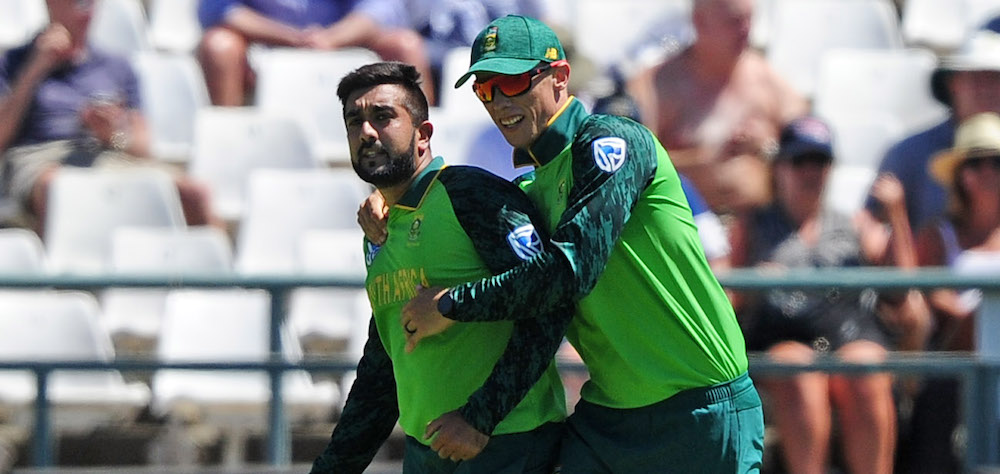
“Look, don't waste your time practising, you're not going to get selected.” Cyril Mitchley was standing a few metres away from Tabraiz Shamsi when he said those words. Shamsi almost stopped in mid stride.
Mitchley, Shamsi’s coach at Jeppe Boys’ High, had seen Shamsi working on his bowling alone in the nets from his office and had gone to investigate. Mitchley had windows that overlooked the nets and cricket fields. No practice was scheduled for that day. The shadows were growing longer. It was late afternoon.
There was nothing odd about the sight. It was normal for Shamsi to stay on in the nets after everybody else had dispersed. On some days, Mitchley and Shamsi stayed on together.
This happened mostly on days when Shamsi would be walking home. The distance between home and school was not too long for Shamsi to walk. Though, his family would pick him up whenever possible.
On many occasions, coach and student would practice well past sundown and Mitchley would have to drive the boy home. Sometimes they shared supper, where coach and student would discuss cricket, mostly.
“Don’t waste your time practising…” Mitchley knew that the words would stick with Shamsi throughout his preparation for the upcoming Under-15 trials. That was the reason why Shamsi was in the nets alone. He was preparing for the trials.
“Cyril Mitchley understood the type of character I am,” says Shamsi. “He was not saying it as a way to bring me down. It was just his way of pumping me up to push even harder because that's what gets the best out of me.”
Shamsi does not know about Ray Allen. Allen is a two-time NBA champion. He has won the Olympic gold medal with Team USA and has been an All-star on numerous occasions.
When Allen was younger, he went for trials with a boy called Kenny. Part of the trials was a free-throw shooting session. Allen scored 23 of 25 baskets. Instead of congratulating his friend, Kenny told Allen, ‘you won’t make the team.’ After Allen made the team, Kenny told him, ‘you will always be on the bench. You won’t start.’ As they were heading out.
A few years later, when Allen got a scholarship to the University of Connecticut, former schoolmates started a rumour that even though Allen had earned a scholarship, he was not good enough to start for UConn. So, he would sit on the bench for four years and come back to town as an alcoholic.
‘We’ve all had a Kenny or two in our lives, someone who tells us we’re not good enough. The question is: Do we let ourselves believe them?’ Allen writes in his autobiography, From the Outside. Kenny's voice stayed in Allen's head. He used it to propel him forward.
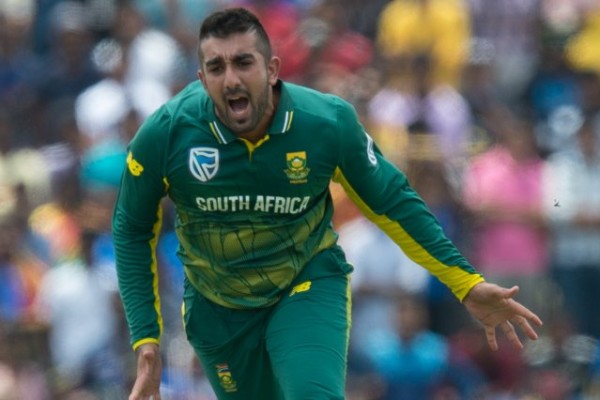
Like Allen, Shamsi has a fire inside him, and doubters add wood to that fire. Shamsi knows what people say about him. Others have said the same things before, using different words and different sentences, but with the same meaning. He was not good enough. While he cannot change their thinking, he can show them they are wrong about him.
Shamsi had a bit of a rebel streak in him. His first instinct was to push back when someone said Shamsi could not do something.
He wanted to walk his path and he was determined to show the world that he was right in choosing that path. The only time when he deviated from his chosen path was when coaches at the U14 trials that he attended told him he could never make it as a pace bowler.
“They said I was not fast enough to be a pace bowler. But I thought I was fast. I wanted to be like Wasim Akram. When I was young I could watch Wasim Akram bowl all day, given the chance,” says Shamsi.
"At the time, Shamsi varied his pace and bowled a few cutters, so one of the coaches suggested that he should become a finger spinner.
When Shamsi asked why the coach thought he should be an off spinner, he expected a profound answer. Instead, he was told that it was the easiest to control.
“That’s why I decided against off spin. Maybe if he had told me that it troubles batsmen more, I might have chosen it. I didn't want to do it because it was easier to control,” again, Shamsi was pushing back.
Cyril Mitchley understood this side of Shamsi early on.
“Mitchley knew how to push the right buttons with me,” says Shamsi.
“I used to rag him a lot,” says Mitchley. “When I wanted to fire Shamsi up, I would wind him up. I would tell him that the batters were going to tear him apart, and hit him all over the park. In response, he would tear down batting attacks.”
Mitchley was right, though, about Shamsi not making the team. Shamsi made the B-team. But, it was not because Shamsi had performed poorly. Someone just felt that they did not need Shamsi’s bowling.
During the trials week, no bowler took as many wickets as he did. He also had the best economy. The bowler of the tournament failed to make the A-team.
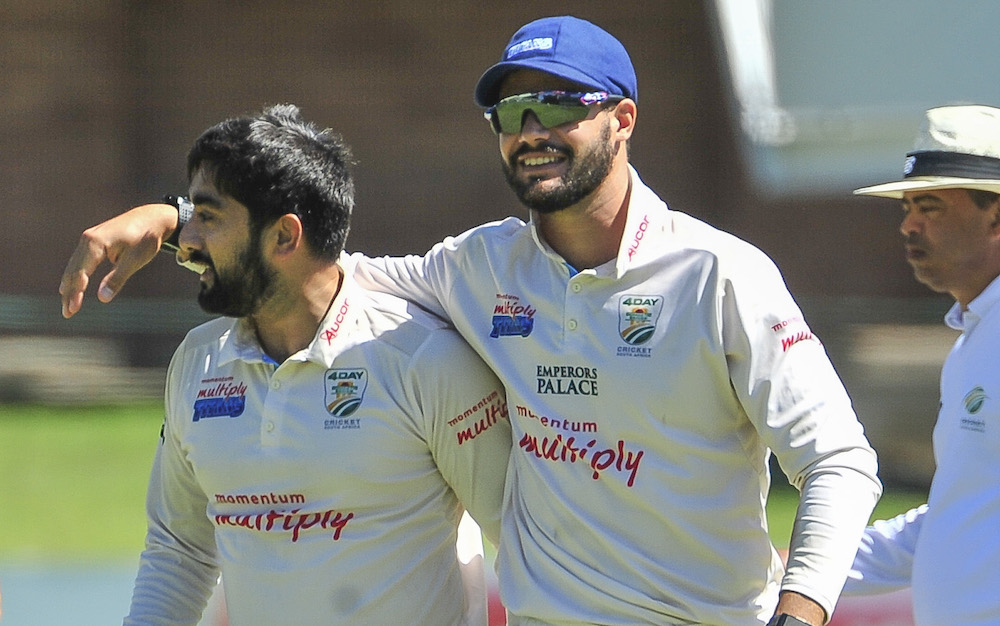
In the following years, Shamsi would attend age-group trials wanting much, but expecting little. He was one of those kids destined to never be picked, yet he still gave it his all.
"There weren't too many days when Shamo didn't have a smile on his face," says Rob Walter, Shamsi's head coach at the Titans. "He had a great nature. He was always bouncing around and you felt he appreciated the privilege of playing professional cricket."
Shamsi joined the Titans after Grant Morgan, the KZN Inland coach, had asked Walter to take Shamsi on board.
Morgs, as Morgan is affectionately known, felt that Shamsi was too good for semi-pro cricket. The young man was single-handedly winning matches for KZN Inland. Unfortunately for Shamsi, opportunities were limited at the Dolphins.
“I could have kept him at Inland,” says Morgs. “But he deserved to go to a franchise that could give him the right opportunities.”
It is difficult to not be grateful for the opportunity to play professional cricket if you are Tabraiz Shamsi. His rise was not fast-tracked. No one earmarked him for greatness. Years later, Imran Tahir, who took Shamsi under his wing, introduced Shamsi to Prasanna Agoram.
At their first net session, Shamsi showed up with a pen and notepad. That impressed Prasanna. What impressed Prasanna more was Shamsi’s bowling - there was more work to be done to improve it, but it was good and different. After the session, Prasanna told Shamsi that he would be the world's number spinner one day.
30 minutes after parting, a soft-spoken Shamsi sent Prasanna a text that read:
“Bhai, it was so kind of you to say I am going to be the number one spinner in the world. I don't think I can dream about it, but I am more motivated to push myself harder. If I tell someone that PDogg told me that I am going to be the number one spinner in the world, they will laugh at me. I don't want people to laugh at me. I won't tell anyone. But I want people to see me when I get there. I will work towards it.”
Shamsi was acutely aware of how he had gotten to where he was. He had taken the long road from street cricket to the big time. He went from fetching balls at the back of the nets to bowling to tailenders in the nets. Top-order batters preferred other spinners whom they felt provided better practice. He didn’t mind that few people paid attention to him, he just showed up every day.
A couple of seasons before joining the Titans, Shamsi suffered an injury. He injured a tendon in his bowling arm, so he was out for six months. Kimeshin Chetty was also injured at the time. He had injured the ligaments in his ankle during the offseason.
“I spent a lot of time with him on the sidelines. As amazing as Shamo is, he doesn't shut up,” says Chetty. “Being stuck on the physio bed is depressing. Shamo was never depressed. He would always be cracking jokes, telling us how he can get us out, how we would never score runs off him.”
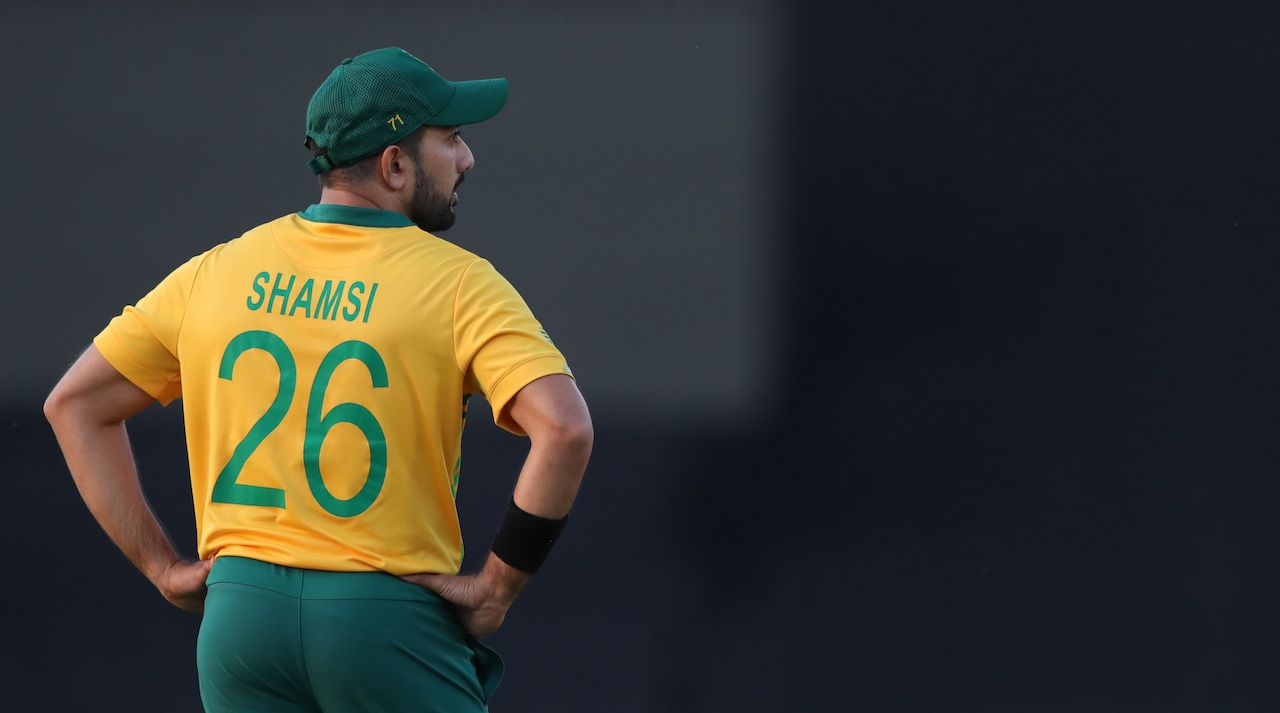
After six months on the sidelines, Shamsi tore his hamstring in his first match back. He suffered a grade two tear. Instead of going back to the physio bed, Shamsi played with the injury.
He ignored the pain, not because he didn't feel it, but because he just wanted to play. This was one of the few times he feared his dream was slipping away. It was one of the few times he did not play with a smile on his face.
As far as Shamsi is concerned, there is no upside in using more energy than you have to. It takes a lot of energy to be angry and maintain that anger.
“I started playing cricket because it was fun,” says Shamsi. “For me, it's like, why must the fun stop now just because I'm playing professionally? Of course, there's a lot of pressure. I mean, you're getting the nation's hopes every time you play. It is your job, you're getting paid for it, and you have to perform to the best of your ability. But, that doesn’t mean I cannot have fun doing the job.”
He brings theatre of magic to the T20 circuit to share that fun and enjoyment of the game with fans.
"In 2019, Shamsi gave me tickets to a World Cup match. His only concern was whether we had enjoyed both the game and the atmosphere," says Simmi Areff, comedian and self-proclaimed number one Shamsi fan. “He has so much time for the fans.”
Three overs, 29 runs, no wickets. Those were Tabraiz Shamsi’s figures when he was pulled from the attack by Albie Morkel. The wicket at the Wanderers was good for batting that day and Shamsi had not gotten a good measure of the pitch. He had not started well.
“I was sad and disappointed in myself after that spell,” says Shamsi. “Albie came to me and said I'm taking you off now but this is not the end of the game for you. You WILL come back and bowl your 10 overs and You WILL get me five wickets to win the game for us.”
The brief pep talk from Morkel went a long way in helping Shamsi maintain a positive outlook. Instead of trudging off to the boundary feeling sorry for himself, which would have affected his fielding, Shamsi felt reassured. He felt that his captain backed him.
Botanist Edward O. Wilson noticed something about the arrowplant; when it grows on dry ground, produces an elephant-ear leaf. In shallow water, it puts up leaves that look like lily pads. If grown in deep water, it develops slender leaves like eelgrass, sort of seaweedy ribbons. The environment awakens something in the plant, freeing it to transform into the shape best suited to its surroundings.
Teams are social situations that are continuously shaped by interpersonal thoughts, feelings and behaviours of athletes and their leaders. Cricketers are no different from the arrow plant, conditions dictate what version of themselves they will be. If the player feels that they have the backing of their captain, teams find themselves in a better position.
When players feel backed, they exceed expectations.
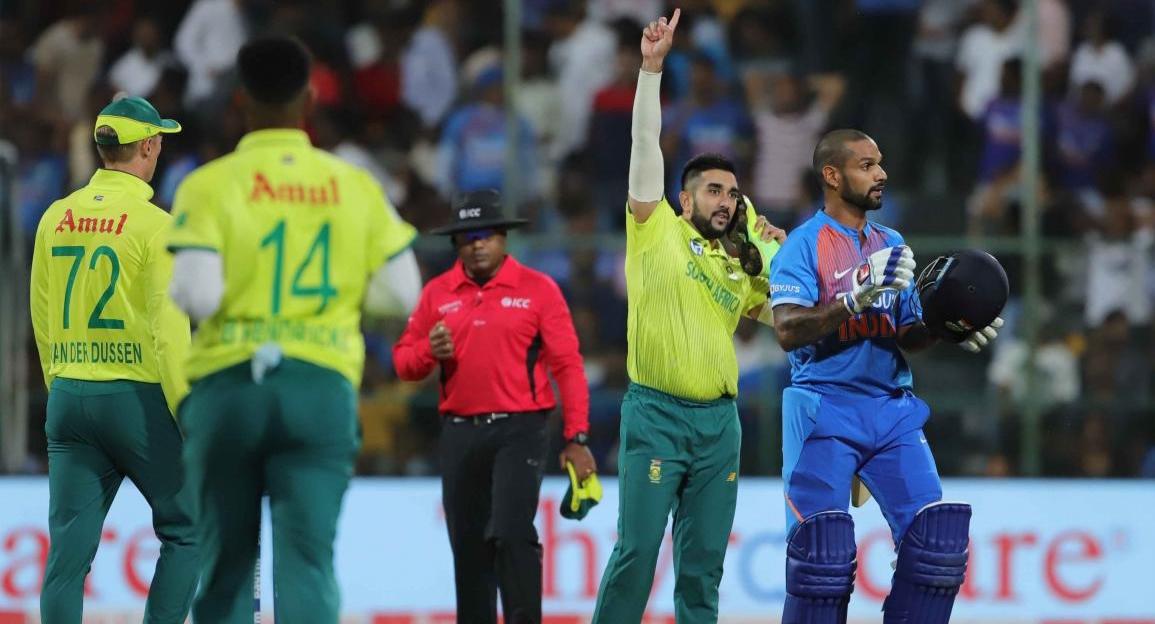
Marlon Samuels was the first captain to back Shamsi in a high-pressure situation. The West Indies star went out on a limb and put his reputation on the line to ensure that Shamsi was picked and played in the Caribbean Premier League.
Samuels had taken a gamble on Shamsi, after watching the young man bowl for the SA Invitational side that was giving the West Indies match practice before a Test series. Shamsi was in the invitational side because he had failed to make the franchise team that was playing that weekend.
In retrospect, Shamsi is grateful that he was a part of that invitational side. He felt differently at the time. One never gets used to being on the fringes. From age-group cricket to that point, Shamsi had always been floating on the fringes, and he never got used to it. It always hurt to be overlooked.
“If I had not been a part of that team, Marlon Samuels would not have seen me, and if he had not seen me, I would probably not have the career that I have. If Samuels had been given out when I had him trapped lbw, he would not have seen me bowling up close,” says Shamsi.
Shamsi had spun his magic the moment he was brought on. He trapped Samuels lbw in his second over. The umpire was unmoved by Shamsi's appeal and did not give Samuels out. For his part, Samuels was sheepish. He tended to the pitch as a distraction. No one walks during a practice match. He needed the time out in the middle, anyway.
In the next 100 or so deliveries that Shamsi bowled, Samuels saw enough to know that Shamsi was a magician. After taking a single off one of Shamsi’s deliveries, Samuels walked up to Shamsi, who was at the top of his run-up for a brief chat.
“Marlon Samuels wanted me to play for his team, the Antigua Hawksbills,” says Shamsi. Unfortunately for Shamsi, the Hawksbills were dissolved days before the draft for the 2015 CPL season. “That was a downer. I started to comfort myself, telling myself that it was okay if no other team picked me.”
Samuels kept his word. He had said he would ‘look after him’, and he did just that. He wanted the world to see this incredible young spinner he had seen in South Africa. When he moved to St. Kitts and Nevis Patriots, Samuels urged the team to sign Shamsi.
Samuels opened Shamsi's eyes to a new world. For the first time in his career, he felt what it was like to not perform with your back against the wall. He liked the freedom to express himself that came with someone believing in him. Shamsi paid Samuels back handsomely, he emerged as one of the top wicket-takers in that edition.
Shamsi’s CPL performance earned him an IPL call-up.
“Here I was, a kid that never felt comfortable in South Africa, never felt he was good enough or told that he was good enough. Here I was in the IPL bowling to Dhoni, the best finisher in the world, all because Samuels had backed me,” says Shamsi.
As he stood at the top of his mark, about to bowl to MS Dhoni, whom he was keeping relatively quiet, Shamsi realised that he was actually good enough to play anywhere in the world, against any batter.
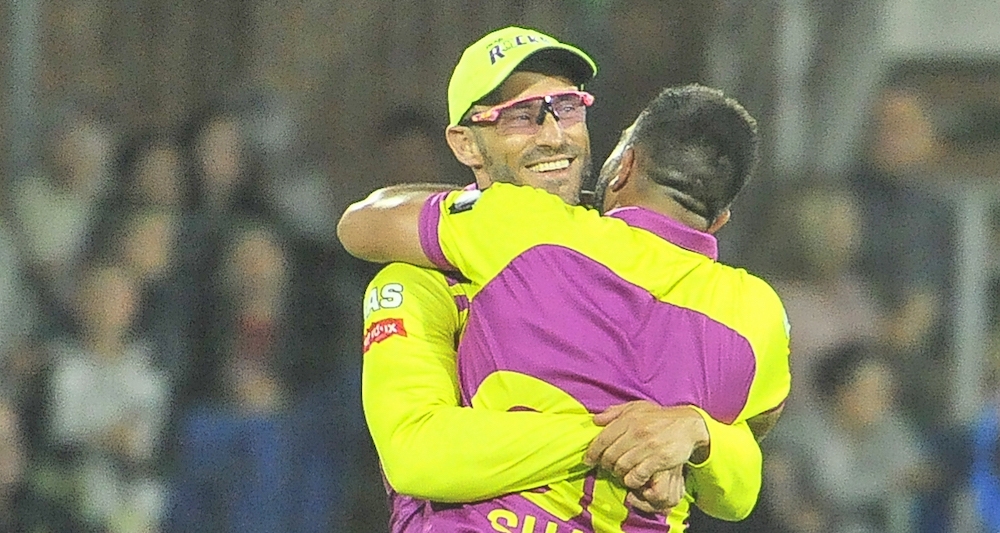
In later years, Shamsi experienced that kind of backing with Faf du Plessis during their time with the Proteas and when they were together at the Paarl Rocks.
“Faf showed me over and over again that he believed that I'm a gun player and can win games and trophies for him. That helped me with my bowling, knowing that he backed me,” says Shamsi. “It was just because he gave me opportunities, but when he benched me, he explained the situation in a way that made me see his thinking and appreciate it.”
When Morkel had the talk with Shamsi, he meant every word. Morkel is not one for lip service, he truly believed that Shamsi could turn the game around, but he also knew that keeping Shamsi on would have destroyed the youngster. He was still inexperienced.
“It was important for him to feel backed. I certainly let him now that he was my man,” says Morkel. “As Shamsi developed, I planned my attack around him and made him my go-to man.”
True to his word, Morkel did bring Shamsi back into the attack. Also true to Morkel’s prophecy, Shamsi bagged a five-wicket haul (8.3 overs, 74 runs, five wickets) to help the Titans secure victory.
It took Tabraiz Shamsi a few months to learn his favourite magic trick. It's a card trick. It was months of simply mastering the technique, and learning to execute the trick with finesse, and without unnecessary finger movement or extra unnecessary motion.
“For months, I spent a lot of hours in front of the mirror going over the trick again and again and again,” says Shamsi.
Shamsi brings the same focus and dedication to his cricket. That is why he has a camera, a Canon EOS 250D, with him during training sessions. The camera is his faithful companion. He records every session and goes over the clips, nitpicking mistakes, just as he would do if he was trying to perfect a sleight of hand trick.
In a way, the principles are the same, his body needs to give away as little information as possible when he bowls his variations.
“I am a visual guy,” says Shamsi. “The camera is there for me to be able to sit down and see what the coaches and analysts will be speaking about when they tell me what I need to improve on. It’s one thing to hear them say what I need to do. My brain just processes the information better when I watch it.”
That’s why he had the camera around when he worked on his batting with Mandla Mashimbyi, his Titans coach, and Justin Ontong, the Proteas fielding coach. Shamsi has been doing a lot of work on his batting.
The idea is not to try and turn Shamsi into a batting allrounder. Shamsi accepts his limitations in that regard. Nor is the plan to make Shamsi a number 11 who can stick around. That is not helpful in limited-overs cricket, especially in the T20s. Shamsi wants to expand his range of shots to become a number 11 that can hit a couple of boundaries.
“I will never be the guy that is needed to score a 50 or face 30 balls. I am a number 11, in T20 I will face, maybe, a maximum of 10 deliveries,” says Shamsi. “The work that I do with my batting is so that I can contribute as much as I can in that space of time.”
It is not all the time that Shamsi has access to video footage. When he does not have access to video footage, Shamsi does his best to translate what the coaches and analysts say to him into a ‘language’ that he understands better. Shamsi appreciates that two people can say the same words but mean different things.
“During my time with the Proteas, we used to have strategy meetings where I always provided players with detailed information on the opposition. Everyone received papers, mini-files, to study later,” says Prasanna.
Invariably, Shamsi would show up in Prasanna’s room with a pen and notebook around midnight. Prasanna does not remember a time when they met to discuss cricket when Shamsi did not bring a pen and notepad. Shamsi had one when they had their first meeting, initiated by Imran Tahir, and he always had one in all meetings they held.
“He would always say that he carried the pen and notepad around because he needed to take down the information in his own language, in a way he understands,” says Prasanna.
Shamsi preferred to have the talks around midnight because he wanted that information to be the last thing on his mind before going to bed. It was also the first thing on his mind when he woke up. He obsesses over details.
“On the bus the next day, you would see Shamsi on his mobile. Many would think he was watching videos. Instead, he would be going through the information he had taken down,” Prasanna continues.
Shamsi prepares as if it’s his last match, practices like a player fighting for his position on the team, and plays every match as if he has something to prove. His determination for improvement matches his enthusiasm for other people. Halfway is for other people.
“Shamsi’s performances on the field are not by chance. He has an incredibly high work ethic and he wants to develop as a cricketer all the time. He is not scared to ask questions and is willing to learn out of mistakes and tough times,” says Albie Morkel.
“Before practice, he would be there, in the nets with cones, working on his bowling,” says Chetty. “After practice, he would be there sticking cones down as everyone was dispersing. People would abuse him, ‘Why are you practising so much?’”
Bowling wrist spin, or any sort of spin, is suited 'for a personality obsessed with the chase and inclined towards the pursuit of perfection.' As Ben Jones and Nathan Leamon wrote in Hitting Against The Spin.
That’s why Shamsi has the camera, it picks up even the most minute details, which helps him in his pursuit of perfection. Little details are important.
Shamsi stands at the top of his mark in the indoor training centre, ready to deliver his first ball. The work has begun.
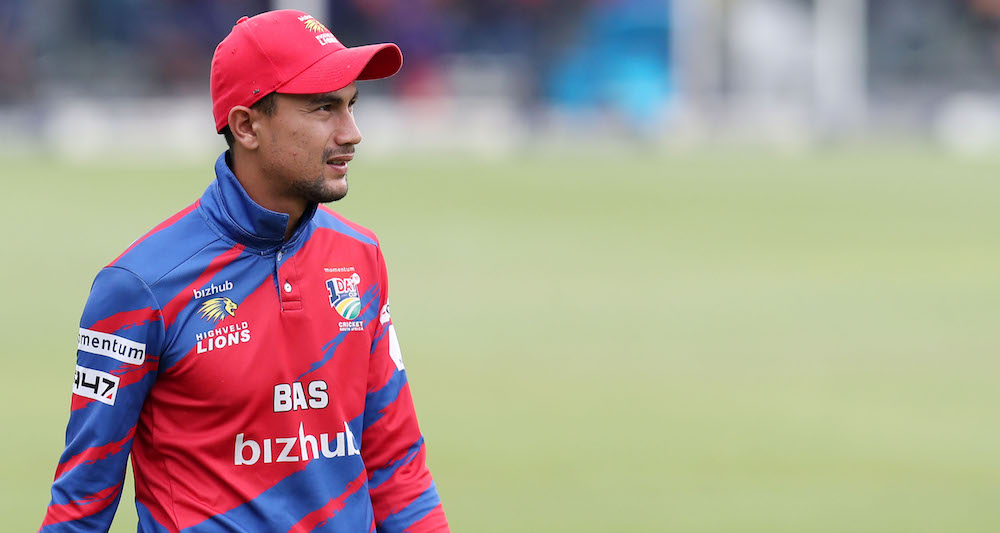
Q&A: Bjorn Fortuin
How did your journey in cricket begin?
My journey started in Paarl playing school and club cricket with my uncle and cousins at around 7-8 years old.
You made your T20I debut for SA against India in 2019, and ODI against England in 2020. To what extent are internationals different from the domestic scene?
They differ in terms of skill level as well as the cricket awareness aspects.
You get exceptional players thinking about the next ball and they are ruthless when it comes to the execution. It’s a massive step-up in every aspect.
How do domestic tournaments prepare you for overseas tournaments and playing conditions?
They prepare you in terms of learning how to adapt to certain conditions but comparing the two is quite hard in terms of skill level.
What do you do to keep yourself focused when touring overseas, and how do you deal with pressure?
I try to keep a balance of disconnecting from the game, but to also keep thinking of ways to get better. At the same time not overthinking things.
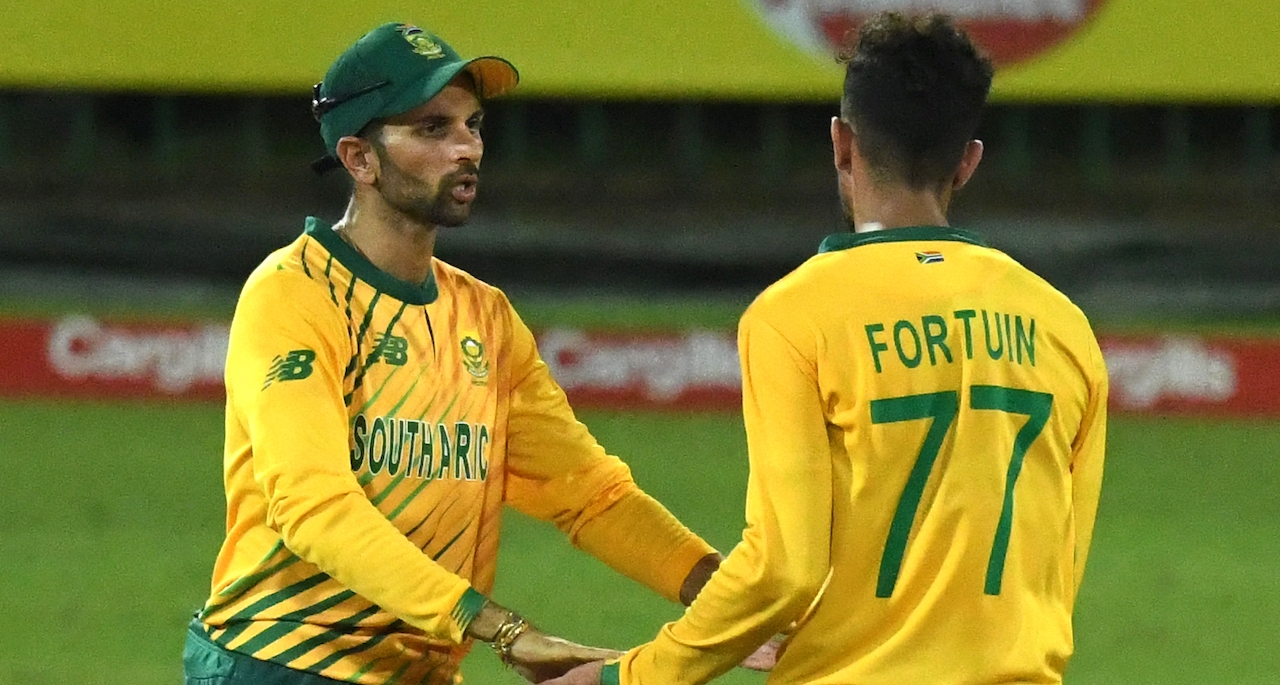
To what extent does patience as a bowler play a role? How do you keep yourself from becoming complacent?
Spin bowling relies on being patient, but also consistent. I find being patient and controlling the game gives me the biggest chance of taking wickets, and that keeps me wanting to get better at this. Letting go of that brings the batsman back into the game which makes an already tough job even harder.
What have you learned from international tournaments such as the CWC 2021, and what were your thoughts and feelings going into this tournament being selected in the team for the first time?
It was a massive dream come true going to the World Cup, and a real eye-opener seeing the best players in the world going all-out at a major tournament, but it also made me hungrier and more determined to try and do the same one day.
Do you have any Test cricket aspirations?
I do, but my performances need to get a lot better and a lot more consistent if it were to happen. Right now, our spinners are some of the best in the world and it’s our job to get to that level.
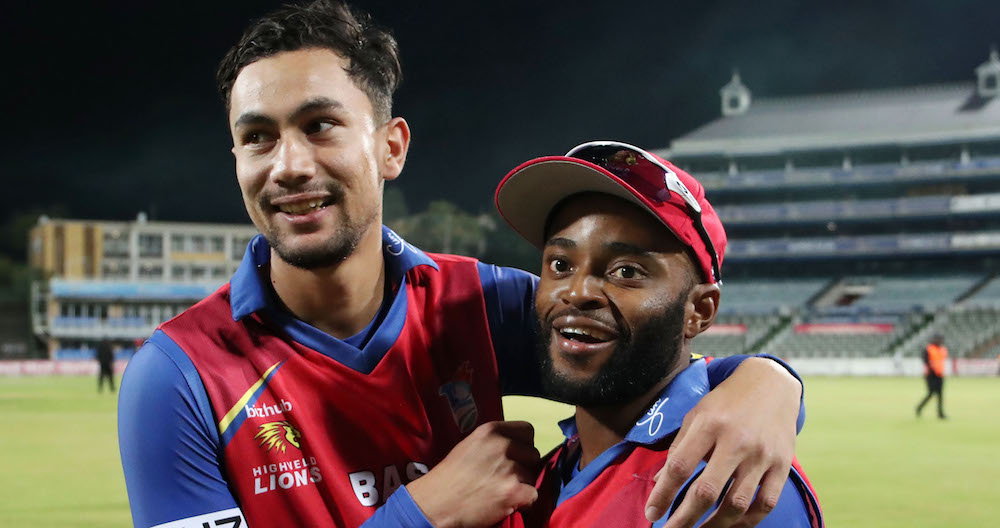
Favourite cricketer(s)?
Herschelle Gibbs
Lance Klusener
Ravindra Jadeja.
Favourite places to tour (where you have already been and would like to go?
I really enjoy touring India, would love to see New Zealand one day.
Would you consider getting serious about all-rounder status since you’ve done so well with both bat and ball?
I’m trying my best!
Top 5 hype songs on your playlist:
Loading – Central Cee,
Vossi bop – Stormzy,
Non-stop – Drake,
Stargazing – Travis Scott,
Famous – Kanye West.
Are you following any series/anime?
Really into Stranger Things and Breaking Bad right now.
Top 3 video games?
Call of Duty: Warzone
Apex Legends
GTA V.
Manchester United or Liverpool?
United every day of the week! #GGMU
Daily Show | Let's talk about it
Video Playlist
The Podcast Live Show:
Exclusive Interviews
Crossword Puzzle
Current Events - July/August 2022
ISSUE 25: Crossword Answers


Magazine info
Editorial Director
Khalid Mohidin
IT and Technical Director
Faizel Mohidin
Contributors
Abhai Sawkar
Aditya Mehta
Chris Chiwanza
Jessica October
Janine October
Khalid Mohidin
Marc Jacobson
Ongama Gcwabe
Ravi Reddy
Graphics
Khalid Mohidin (Cover and Graphics)
Images
BackpagePix
Supplied
Twitter
Facebook
Video Binge List:
On Lockdown Series
The Podcast Show
Legends with Ravi
Daily Show
